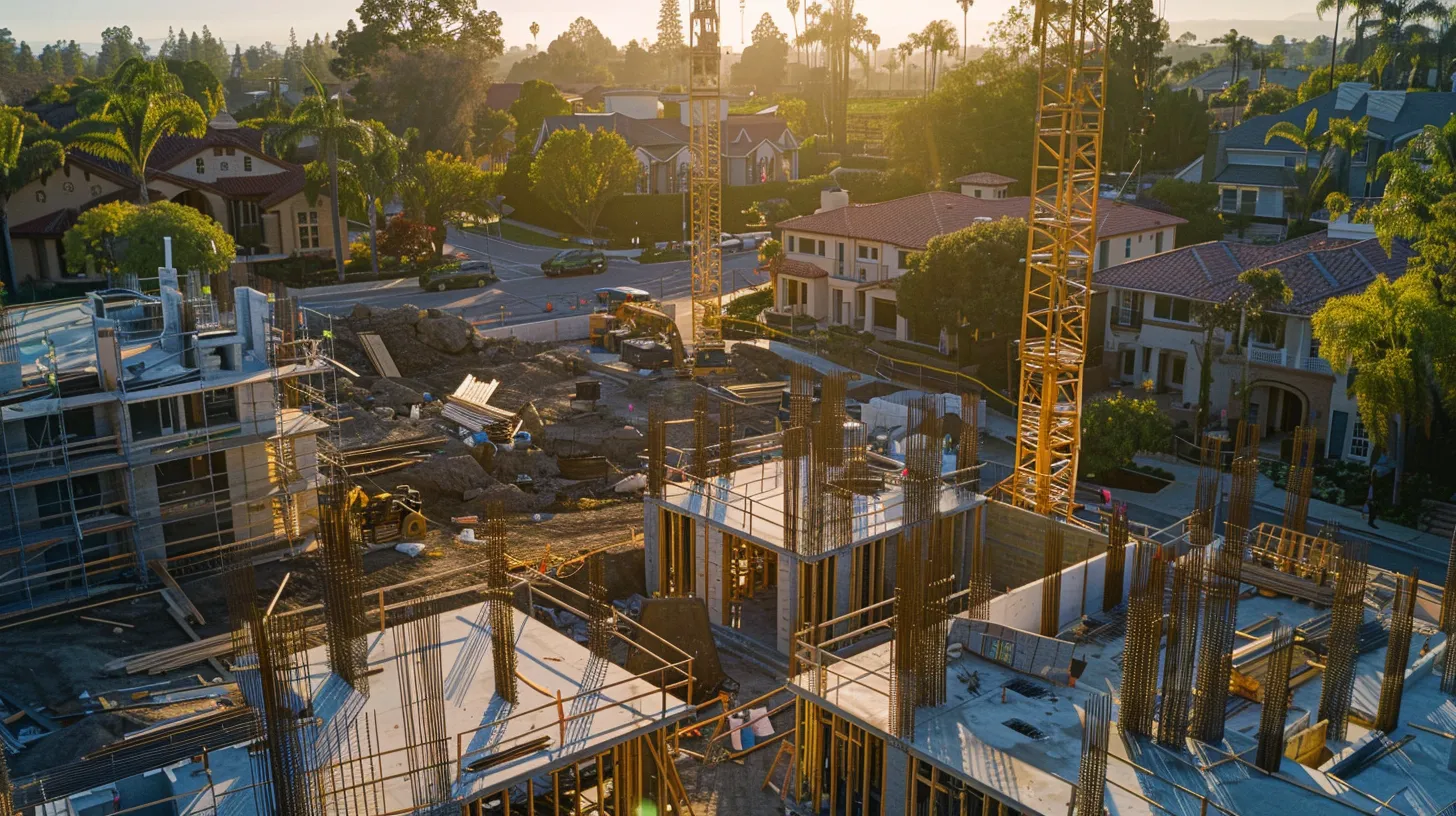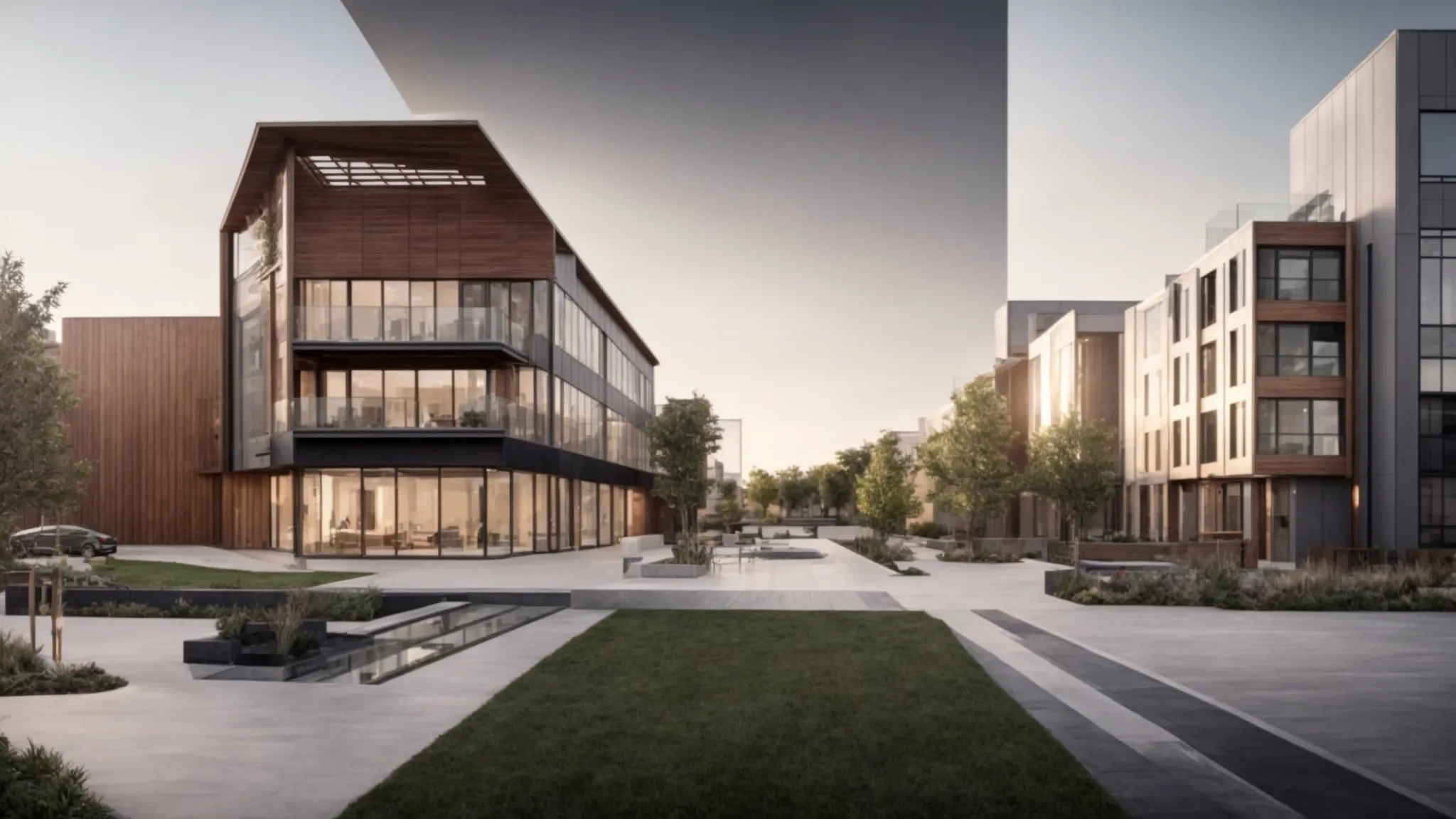Commercial Project Management vs. Residential Project Management: Key Differences

Commercial Project Management vs. Residential Project Management: Key Differences
Commercial project management and residential project management often appear similar on the surface but involve distinct approaches and strategies. Understanding these differences is essential for ensuring successful outcomes. This article will outline key aspects, including project phases, financial considerations, and regulatory factors. Readers will gain insights into choosing the right management style for their specific projects, addressing challenges in culture, sustainability, and human resource management. Ultimately, this content aims to clarify common pain points in development communication, guiding readers towards effective project management solutions.
Key Takeaways
- Commercial project management relies heavily on contracts and regulatory compliance for success
- Key stakeholders, such as investors and contractors, significantly influence project outcomes
- Each project type requires tailored strategies to meet specific regulatory and community needs
- Effective communication and collaboration are vital for navigating complex project challenges
- Risk management techniques differ between commercial and residential projects, impacting overall execution
Defining Commercial Project Management

Commercial project management encompasses unique characteristics, such as the prominence of contracts and regulatory compliance in construction projects. Key stakeholders, including investors, contractors, and municipal authorities, play essential roles throughout the process. This section will explore the various project types, ranging from office buildings to retail spaces, emphasizing analytics and skills critical for successful management.
Key Characteristics of Commercial Projects
Commercial projects are defined by several distinct characteristics that set them apart from residential ventures. Key elements include the necessity for comprehensive evaluation processes, zoning regulations, and effective change management strategies. The integration of logistics management also plays a critical role in ensuring that large-scale projects are completed within their designated timelines and budgets. These aspects highlight the importance of precise planning and execution in commercial project management, allowing for streamlined operations and optimal outcomes.
- In-depth evaluation processes
- Adherence to zoning regulations
- Effective change management strategies
- Importance of logistics management
Common Stakeholders in Commercial Project Management
In commercial project management, key stakeholders play vital roles that differ significantly from those in residential projects. Essential players include investors focused on funding and financial returns, contractors responsible for executing construction, and municipal authorities ensuring compliance with local regulations. Moreover, an organization ’s approach to contract management can dictate the success of infrastructure projects, highlighting the importance of adopting clear communication and collaboration strategies among all involved parties for effective execution.
Typical Project Types and Examples
Commercial project management involves a range of project types, including office buildings, retail establishments, and industrial facilities. Understanding these disciplines requires familiarity with the specific governance and policy frameworks applicable to each type of project. For example, construction of a shopping center necessitates stringent safety regulations and logistical coordination to meet both client expectations and local compliance standards, emphasizing the need for a well-rounded approach across various commercial initiatives.
Commercial project management lays the groundwork for large-scale success. Yet, the essence of residential project management captures a different kind of challenge, one that brings home the heart of the matter.
Defining Residential Project Management

Residential project management encompasses distinct characteristics that set it apart from commercial projects, focusing on individual homes and communities. Key topics include the primary stakeholders involved, such as homeowners, contractors, and local authorities, as well as typical project types like single-family homes and apartment complexes. Understanding these elements provides valuable insights into the unique regulatory frameworks and considerations, including equal opportunity and factors related to veteran services and sexual orientation, relevant to residential initiatives.
Key Characteristics of Residential Projects
Residential projects are characterized by a focus on individual homes and community development, presenting unique challenges and requirements. The certification process for contractors is particularly significant, ensuring that all subcontractors meet the necessary criteria for quality and safety. Additionally, determining accurate pricing and effective procurement strategies are essential for managing resources efficiently, directly impacting project timelines and overall success.
- Focus on individual homes and communities
- Importance of contractor certification
- Role of subcontractors in project execution
- Effective resource management through procurement
- Pricing strategies that affect project viability
Common Stakeholders in Residential Project Management
In residential project management, various stakeholders contribute significantly to the project's overall success. Homeowners prioritize transparency and seek confidence in the execution process, while contractors are essential for delivering quality work within specified timelines. Local authorities also play a vital role, ensuring that projects adhere to zoning laws and safety regulations, which enhances visibility and trust within the community. Additionally, integrating total quality management practices across all levels significantly boosts efficiency and incentive for all parties involved:
- Homeowners seeking transparency and confidence
- Contractors focused on quality and timelines
- Local authorities ensuring compliance with regulations
- The impact of total quality management on project success
Typical Project Types and Examples
Typical project types in residential project management include single-family homes, townhouses, and apartment complexes, each requiring a tailored approach to meet community needs. Factors such as contractor salaries and human resources strategies heavily influence project execution, while the incorporation of guaranteed maximum price agreements can enhance budget reliability. Additionally, considerations around zoning regulations and community aspects, including religion and cultural diversity, play a pivotal role in shaping these residential initiatives.
Understanding the essence of residential project management sets the stage for what follows. Now, let’s look closely at the phases that shape every project, revealing their distinct roles and challenges.
Comparing Project Phases

Project initiation and planning reveal significant differences in commercial versus residential project management, particularly in areas like risk management and stakeholder engagement. Execution techniques vary between the two, influenced by factors such as innovation and regulatory compliance. Monitoring and controlling practices also show distinct approaches, particularly in construction management, ensuring that projects adhere to established timelines and budgets while respecting elements like gender identity and community concerns.
Project Initiation and Planning Differences
In project initiation and planning, commercial and residential project management exhibit notable differences shaped by their distinct focus areas. For commercial ventures, the architecture and organizational structure play pivotal roles, as these projects often involve multiple stakeholders and complex regulatory frameworks. In contrast, residential projects prioritize a strategy that integrates community needs, including considerations around gender dynamics and inclusivity, which directly influence decision-making processes and project outcomes.
| Aspect | Commercial Project Management | Residential Project Management |
|---|---|---|
| Focus Area | Architecture and organizational structure | Community needs and inclusivity |
| Stakeholders | Multiple, including investors and contractors | Homeowners and local authorities |
| Strategy | Complex regulatory compliance | Emphasis on gender dynamics and community integration |
| Project Examples | Office complexes, shopping centers | Single-family homes, townhouses |
Execution Techniques and Variances
Execution techniques in commercial project management emphasize a structured methodology to manage regulatory compliance and mitigate risk, particularly concerning potential damages that could arise from stakeholders' actions or project execution failures. Projects often utilize sophisticated software tools to enhance efficiency in tracking progress and managing resources, enabling teams to respond rapidly to changes. In contrast, residential project management leans toward more agile techniques, incorporating community feedback and adaptability in the planning process for better alignment with local needs:
- Commercial projects prioritize structured methodology and regulatory compliance.
- Risk mitigation focused on potential damages during execution.
- Utilization of advanced software tools to boost efficiency.
- Residential projects emphasize agile techniques and community feedback.
- Adaptability in planning aligns project outcomes with local needs.
Monitoring and Controlling Practices
Monitoring and controlling practices in project management differ markedly between commercial and residential projects. In commercial settings, leadership and stakeholder management are critical for overseeing project progress and ensuring compliance with architectural standards and regulations. For instance, an architect in a large office complex frequently collaborates with various stakeholders to address potential employment considerations and proactively manage risks that may affect the project timeline and quality.
- Leadership plays a critical role in oversight.
- Stakeholder management is essential for engagement.
- Architects must ensure compliance with standards.
- Employment considerations influence project strategies.
- Proactive risk management addresses potential roadblocks.
As teams navigate through project phases, they often find themselves facing tough choices. Next, they must confront the financial realities that shape every decision.
Understanding Financial Considerations

Budgeting for commercial and residential projects showcases distinct methodologies shaped by their unique funding sources and financial risks. Commercial project budgeting often involves strategic planning to ensure profitability while managing stakeholder expectations. Conversely, budgeting for residential projects focuses on customer needs and community impact. Both scenarios require careful risk assessment and decision-making to navigate potential financial challenges effectively.
Budgeting for Commercial Projects
Budgeting for commercial projects requires a comprehensive approach to ensure financial efficiency and adherence to strategic goals. Utilizing tools like Microsoft Excel can facilitate detailed expense tracking and forecast modeling, while aligning with the project management body of knowledge ensures that budgeting practices are robust and compliant with industry standards. Effective negotiation with stakeholders for funding and resource allocation is essential, as is the implementation of building information modeling to enhance precision in budget estimations and quality management throughout the project lifecycle.
| Aspect | Commercial Project Budgeting | Key Tools and Techniques |
|---|---|---|
| Financial Efficiency | Requires detailed expense tracking | Microsoft Excel for forecasting |
| Compliance | Aligned with project management body of knowledge | Industry standards in budgeting |
| Stakeholder Engagement | Effective negotiation for resources | Engagement strategies |
| Precision | Utilization of building information modeling | Enhances budget estimations |
| Quality Management | Management throughout the project lifecycle | Ensures project success |
Budgeting for Residential Projects
Budgeting for residential projects involves a thorough understanding of accounting principles and ethical practices to ensure compliance with relevant laws. A project management professional must incorporate risk mitigation strategies to effectively manage financial uncertainties, safeguarding the project against potential cost overruns. By maintaining clear financial records and adhering to legal requirements, project managers can enhance transparency and build trust with stakeholders, ultimately contributing to the project's success.
Funding Sources and Financial Risks
Funding sources for commercial and residential projects significantly influence financial risks associated with project management. In commercial ventures, financing often involves loans and investor capital, which necessitates rigorous cost accounting measures to prevent financial failure and mitigate potential liquidated damages. Understanding these financial dynamics is essential for project managers, as highlighted by the Project Management Institute, ensuring that the knowledge of funding sources aligns with effective risk management strategies.
- Commercial funding often includes loans and investor capital.
- Cost accounting is critical to prevent financial failure.
- Mitigating liquidated damages is essential for project success.
- Knowledge of financial dynamics supports effective management.
- Insights from the Project Management Institute inform best practices.
Financial health is just one part of the equation. Next, it's important to examine the rules that shape decisions and actions in this field.
Analyzing Regulatory and Compliance Factors

Commercial project management involves navigating a broad array of regulations and legal frameworks, ensuring compliance in every stage. This includes understanding complex permitting processes and approvals. Conversely, residential project management must adhere to specific standards and regulations focused on community development. Both sectors require diligent research and quality assurance practices to manage these challenges effectively.
Commercial Regulations and Legal Framework
In commercial project management, regulations and legal frameworks are critical in guiding project execution. The general contractor often assumes responsibility for navigating these complex regulations, which may involve submitting requests for information (RFIs) to clarify project requirements and ensure compliance. Effective collaboration among stakeholders is vital to minimize potential conflicts and facilitate conflict resolution, particularly when regulatory challenges arise.
- Understanding complex regulations is essential for project success.
- The general contractor plays a key role in compliance.
- Requests for information (RFIs) help clarify project details.
- Collaboration among stakeholders is critical.
- Conflict resolution strategies address regulatory challenges.
Residential Regulations and Standards
Residential regulations and standards play a critical role in guiding project management, influencing factors such as fee structures and ensuring a satisfactory return on investment. Compliance with local building codes and zoning laws is essential for maximizing productivity and minimizing delays during construction. For instance, a thorough understanding of these regulations equips project managers with the necessary tools to navigate the complexities of permitting processes, thereby enhancing overall project efficiency and aligning outcomes with community needs.
Navigating Permits and Approvals
Navigating permits and approvals is a critical aspect of both commercial and residential project management, but the complexities often differ significantly. In commercial projects, the process usually involves multiple layers of regulatory scrutiny, requiring extensive documentation and adherence to safety and zoning regulations. For instance, constructing a new office building typically necessitates permits from municipal authorities, as well as reviews by planning boards. Conversely, residential projects may face less stringent requirements but still demand compliance with local building codes, ensuring that homes meet essential safety standards and community specifications. Understanding these differences helps project managers prepare adequately and streamline the approval process, minimizing delays and avoiding costly setbacks.
Regulatory requirements shape the landscape, but they do not define success. Mastering effective project management strategies can steer the way forward, ensuring goals are met amidst the constraints.
Effective Strategies for Project Management

Effective project management strategies vary significantly between commercial and residential domains. Commercial project management strategies focus on regulatory compliance and stakeholder involvement, while residential project management approaches emphasize community needs and contractor certification. Identifying best practices across these areas ensures project success, highlighting practical techniques tailored to each project type.
Commercial Project Management Strategies
Effective strategies in commercial project management prioritize thorough planning and stakeholder engagement to navigate complex regulatory frameworks. For instance, adopting a robust communication plan ensures that all parties, including contractors and investors, stay aligned throughout the project lifecycle. This proactive approach not only mitigates risks but also enhances collaboration, ultimately leading to successful project completion within budget and on schedule.
Residential Project Management Approaches
Residential project management approaches emphasize flexibility and responsiveness to community needs. This entails incorporating regular feedback from homeowners and engaging stakeholders at every stage to adjust plans effectively. For example, utilizing community meetings can provide insights into local preferences, ensuring that projects not only meet regulatory standards but also align with resident expectations.
The following table summarizes key strategies in residential project management:
| Strategy | Description |
|---|---|
| Community Engagement | Involves collecting feedback from residents to shape project decisions. |
| Flexible Planning | Adapts project elements based on stakeholder input and changing needs. |
| Regular Communication | Keeps all parties informed to build trust and accountability. |
| Risk Management | Identifies potential issues early to mitigate impacts on project timelines. |
Best Practices Across Both Domains
Best practices in both commercial and residential project management involve structured communication and collaboration among all stakeholders. For example, regular status meetings can ensure that everyone is aligned with the project's goals and timelines, thereby minimizing misunderstandings and delays. By adopting a proactive approach to risk management, project managers can identify potential challenges early and implement effective solutions, ensuring smoother project execution:
- Structured communication with stakeholders.
- Regular status meetings to enhance alignment.
- Proactive risk management to address potential challenges.
Conclusion
Understanding the differences between commercial and residential project management is crucial for success in each domain. Commercial projects require rigorous compliance with regulations and involve multiple stakeholders, while residential projects emphasize community needs and flexibility. Recognizing these distinctions allows project managers to tailor their strategies effectively, enhancing project outcomes. By applying best practices from both fields, professionals can navigate challenges and ensure the successful completion of projects that meet stakeholder expectations.
